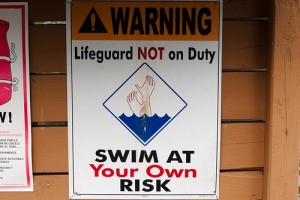I recently watched Dave Cormier‘s “Intro to rhizomatic learning” presentation as part of my participation in etmooc. Here, I’ll explain what rhizomatic learning is as briefly as I can, discuss what it might look like in a university level philosophy course, and ask a few questions.
In the next post I explore a possible critique that I’ve been mulling over. I’m not just assuming here that rhizomatic learning is a good thing (though obviously I find it interesting enough to write about), but rather just at this point examining the idea to help me better work to evaluate it.
What is “rhizomatic learning”? (according to Cormier)
I expect there are numerous views on what rhizomatic learning (or rhizomatic education) are, so I’ll just stick to Cormier’s view here for the sake of clarity. The following is just a brief summary of some parts of his view. If you would like more details, you can watch Cormier’s presentation for etmooc on YouTube, or read his paper on the topic, published in 2008 and posted on his blog, called “Rhizomatic Education: Community as Curriculum.”
In his etmooc presentation, Cormier started off by suggesting that the “best learning” has to do with helping people deal with uncertainty, to figure out how to make decisions and choose the paths they should take when faced with situations in which the outcomes are uncertain. Education is tricky because we don’t know exactly what sorts of knowledge will be needed in the future, the changes different fields will undergo, the changes new technologies will bring, etc. So encouraging good decision-making and creative problem-solving skills, as well as the ability to continually guide one’s own learning to gain new knowledge as needed, are critical.
Cormier then introduced the idea of the rhizome, and rhizomatic learning, as “a model for learning for uncertainty.” I didn’t remember what “rhizomes” were, as it’s been quite some time since I took a botany course, and I’m not much of a gardener. Here’s what I found: some plants (such as ginger, hops, asparagus, and bamboo) have rhizomes, which are stems that are usually underground, and that have nodes from which the plant can move upwards to create above-ground stems, leaves, etc. So, if you have some asparagus in your garden, for example, you won’t just get one clump of it; the rhizomes underground will move horizontally and you will get above-ground asparagus stems popping up in numerous places.
A rhizomatic plant has no center and no defined boundary; rather, it is made up of a number of semi-independent nodes, each of which is capable of growing and spreading on its own, bounded only by the limits of its habitat. (Cormier (2008), “Rhizomatic Education: Community as Curriculum”)
Rhizomes are very resilient as well; such plants are very difficult to get rid of, in part because new shoots can arise even if you break up the rhizome. As Cormier put it in his etmooc presentation: you can take any part of a rhizome and drop it somewhere else, and the plant will start to grow again. This idea of propagating laterally, rather than horizontally, is important in Cormier’s view of rhizomatic learning–this sort of learning takes place through connections made amongst groups of people, forming a network, rather than through knowledge or information-transmittal through experts (top-down) such as instructors or researchers publishing in peer-reviewed journals. Since in many fields “[i]nformation is coming too fast for our traditional methods of expert verification to adapt,” it makes sense to develop environments where “collaborative learning construction” can take place (Cormier (2008), “Rhizomatic Education: Community as Curriculum”). Such environments include wikis, collaborative documents, as well as environments such as the “personal learning networks” made possible by sharing tools such as Twitter, blogs, social bookmarking and social curation sites, and more. In these collaborative spaces individuals come together in various groups to learn and to create knowledge. Each individual may be a member of multiple groups, and these groups form, change, disband, reform continually.
Cormier also gets some of his ideas for rhizomatic learning from Deleuze and Guattari’s A Thousand Plateaus: Capitalism and Schizophrenia. I haven’t read the book, but found these brief notes on Deleuze & Guattari’s notion of rhizomes useful (I got think link from a google doc linked to a post on Dave Cormier’s blog).
My sense of rhizomatic learning at this point, then, is that it is the sort of thing that is happening in etmooc, as well as informally by many, many people around the globe working with the kinds of social tools noted above, but also working in face to face situations with others. It’s probably the kind of learning most of us do in lives outside of educational institutions.
But Cormier seems to be arguing for it also to be part of more “formal” education. Instead of instructors creating a curriculum in advance that is the same for every student in the course, the community of learners constructs the curriculum.
In the rhizomatic model of learning, curriculum is not driven by predefined inputs from experts; it is constructed and negotiated in real time by the contributions of those engaged in the learning process. This community acts as the curriculum, spontaneously shaping, constructing, and reconstructing itself and the subject of its learning in the same way that the rhizome responds to changing environmental conditions. (Cormier (2008), “Rhizomatic Education: Community as Curriculum”)
Note that in this quote Cormier says the community not only creates the curriculum, it is the curriculum, an idea he reiterated in his etmooc presentation. I am not entirely sure what he means by this, but perhaps the thought here is that as the community changes (and it is always changing–if not in terms of people coming and going, then in terms of what people say and do in it, what they share and discuss, never remaining static), so does the curriculum. “A curriculum for a course is something that can be created in time, while a course is happening,” Cormier says in a blog post called “Rhizomatic Learning: Why we Teach”.
What is the role of the instructor in rhizomatic learning environments? Here’s what Cormier says:
The role of the instructor in all of this is to provide an introduction to an existing professional community in which students may participate—to offer not just a window, but an entry point into an existing learning community. (Cormier (2008), “Rhizomatic Education: Community as Curriculum”)
In rhizomatic learning environments, then, what is learned and how is shaped by a community of learners, and this changes constantly. I imagine that for a formal educational environment, one could have students set out what they’d like to investigate, help them with the tools they can use to investigate it and to form a community of people to help (a “personal learning network,” e.g.). I also imagine using a grading contract; that’s exactly what Cormier did with one of his courses last year.
When is rhizomatic learning appropriate?
Is Cormier suggesting that all learning should take place through the rhizomatic model? Definitely not. He said in his etmooc presentation that for learning situations in which specific kinds of knowledge must be gained, rhizomatic learning is the wrong way to go. In addition, if a body of knowledge that needs to be learned is stable, then rhizomatic learning may not be appropriate and information transfer more so. Also, as Phil Macoun noted in a blog post, if there are certain basic principles and foundational information needed in a field before learners can really benefit from discussions within a wider network of other learners, researchers and practitioners, then more “traditional” learning approaches would seem to be best for those earlier steps.
Cormier explained this point in his etmooc presentation by using the Cynefin decision-making framework from Dave Snowden. Explaining this framework would take an entire blog post in itself, but thankfully Cormier has a post that does so. Rhizomatic learning is appropriate for situations that fall into the “complex” part of the framework, where, as Cormier puts it, there are no clear “right answers.” There is no obvious “best practice,” and we can’t just turn to experts to find out what to think, what is right to do, or what counts as true knowledge. Snowden says in the video linked above that in the complex domain, outcomes are uncertain and unpredictable; cause and effect relationships can’t be known in advance, only in hindsight. One can only engage in experiments and see what happens to determine the best course. This is the domain where novel practices and knowledges are tested and may be adopted, instead of seeking to find already-established solutions from experts. The Cynefin framework is much more complicated than this, but I won’t go into its other parts here.
This is enough to suggest that rhizomatic learning is not so great, perhaps, for basic mathematical skills or some aspects of science education, but it might, on the other hand, be useful for philosophy. We deal in questions that are still open in many ways (though there are some recognized procedures and accepted truths, there is much that is still negotiated and a good deal of room for novel approaches and arguments).
Rhizomatic learning in philosophy
What would rhizomatic learning look like in a postsecondary philosophy course?
For an introduction to philosophy course, e.g., one might allow students to identify what philosophical questions they are interested in, and then provide them with the tools to find out what others have said about those questions and to formulate their own response. The common instruction in the class could be on things like: what common philosophical questions are and a chance to develop your own if you don’t want to pursue one of those; what arguments are, how to evaluate them, and how to construct your own; how to write philosophy essays, etc. Then students could spend part of the class time and part of their own time doing research to work on their questions.
I can imagine this happening in groups within the class, so students interested in the same areas could work together, and thereby build a small network. Then the groups could create wikis, videos, slideshows, or use other means to share what they have found with the rest of the class; individuals could share what they have developed as their own views on the questions separately, perhaps.
The professor could also suggest web resources for certain kinds of questions, and any social networks related to people interested in philosophical issues, as well as social bookmarking sites that might have good links.
This could work for an intro to philosophy course in which the students involved don’t need to gain knowledge of the history of philosophy so much as get a taste of what philosophers do. For courses that are required for majors, and in order for students to take more upper-level courses that rely in part on knowledge of certain aspects of the history of philosophy, then a more focused approach is required to ensure that students are exposed to the necessary authors and texts.
Questions and concerns:
— I can think of a few websites with philosophy information that would be good for introductory-level students, but not many. Of course, they could work to find others that I don’t know about. It would help if there were more open educational resources available in philosophy.
— I’m not sure how I would introduce students into a wider social network of people that could help them with their questions. I guess I could try to include more philosophy teachers in my own PLN (so far it’s mostly people talking about education generally), and connect students that way. Ideally, I would help them connect with other students investigating similar issues (outside the course), so they could learn and generate knowledge together…but I honestly don’t have a clue how I might go about doing that.
— Why only point them to other websites and other people to connect with? Am I not a good connection to have, and shouldn’t I share my own knowledge as part of this community creation of knowledge? Perhaps the idea is to work more one-on-one with individuals or groups on their own projects, and be part of their network that way? That would be fantastic, if only it were possible in intro-level philosophy courses in a large university (ours are about 150 students or so). They can work together as teams on specific questions, but I don’t have time to offer directed help to each team.
— How is this different from students getting together in groups to do research projects and then presenting them to the rest of the class? Is it that one should be helping them develop a larger network to discuss their projects in, rather than just doing research and discussing within the small group?
— If the previous point is the case, then I see this being difficult to do in a short (13-15 week) course. Building that kind of network takes a long time, and then discussing things within it takes awhile too…I doubt there would be time to do it in a single semester/term.
Your comments
I’m wondering if I’ve misconstrued anything about rhizomatic learning here, or if there are other ways it might be used in a course like philosophy. Or any thoughts about my questions, above?
“Iris Rhizomes,” by Rhian vK, CC-BY 2.0, via Flickr
Cynefin Framework, CC-BY-3.0, via Wikimedia Commons



